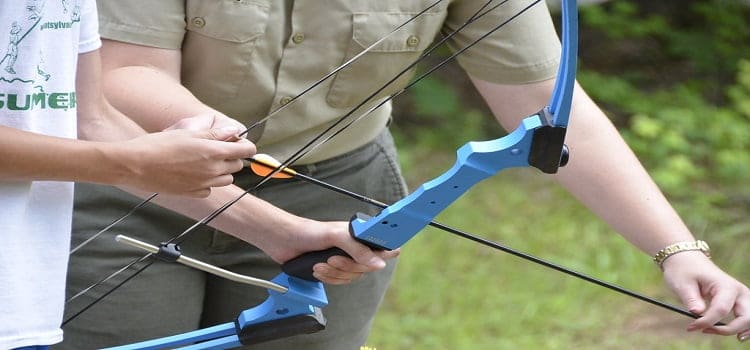If you’re thinking about buying a recurve bow but aren’t sure where to start, you’ve come to the right place! We’re here to assist you in finding the correct recurve bow to improve your archery skill. So, the next time someone asks you how to buy a recurve bow, you’ll be able to give them precise instructions.
For beginners, there are a number of ways to save money and effort by making certain investments and taking shortcuts. When purchasing your first recurve bow, it can be difficult to know where to start because there are so many options available in the market from producers across the globe.
The ideal time to purchase your first bow is shortly after finishing your beginner’s course on bowhunting. Once your elementary form is mastered, a mentor will be able to determine with greater accuracy exactly what sort of specific requirements you have to have for your gear.
Contents
Useful Guidelines to Buy Your First Recurve Bow
Fix your Budget
Determine the discipline for which you are purchasing a recurve bow. Recurved bows are typically used to learn target hitting/games or for hunting. You should first determine your purpose, as recurve bows for hunting and recurve bows for target hitting are not the same thing.
If you are a beginner, it is best, to begin with, a basic recurve bow. Specify your budget in order to find the best one. It’s difficult to stick to a budget when you walk into an archery shop and see your dream designs in front of you! However, a budget fix before succumbing to this dilemma may help you choose one within your price range.
Draw Length
You should consider your draw length and how it affects the equipment. The recurve bow’s height should be your draw length plus 40 inches. The standard setup ranges from 66 to 72 inches, though this varies between young archers.
Riser
This is the most important aspect to consider when selecting a recurve bow because it serves as the foundation for the rest of the bow’s construction. If you take proper care of it and choose the right one, it will last you for many years.
A big part of your budget could be spent here because we all know that we get what we pay for! A riser is typically made of carbon, metal, or wood, and each has its own set of advantages and disadvantages.
Limbs
The choice of limbs is critical for beginners because it determines the archer’s long-term growth and development. Typically, one will outgrow the first limb sets in a short period of time. So you can cut your budget here and go for a less expensive one to save money on buying an expensive new one on a regular basis.
Strings
Bowstrings come in a variety of lengths, colors, and thicknesses. Thicker strings are typically used, and while they are slightly slower, they fit better into the arrow nocks. Before you will jump into your bow hunting days you will have a lot to know about nocking your arrows and stuff.
Choose the best arrow for your recurve bow
To begin, carbon arrows or less expensive aluminum arrows are preferable. The poundage with which one pulls the draw length determines the spine of one’s arrow. You can check the manufacturer charts to see if the relevant details match your expectations.
Conclusion
With these tips, don’t forget to purchase safety equipment to avoid injuries during your fun archery days! When you walk into the store and those flashy bows catch your eye, prepare yourself to ignore them. Because you will have to look deep into the mechanism than the outlook. Of course, there is a wide range and variety available in stores, so focus on your needs to find the best recurve bow as your perfect match for shooting!

